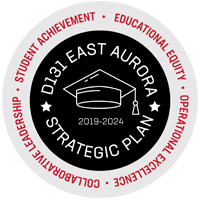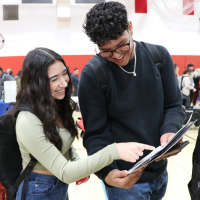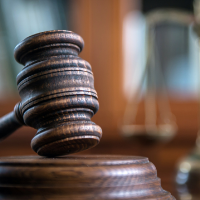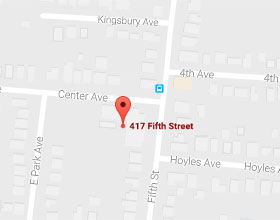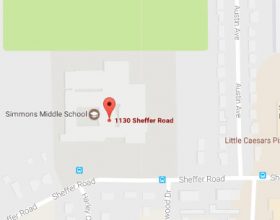Greetings from 6th Grade Science:
Greetings from Mrs. DelFiacco’s 6th grade science classroom. I am very happy that you stopped by my teacher page. We have so many wonderful learning opportunities in science class. I look forward to learning and exploring science ideas and concepts with each and every one of my students.
Would you like to know what educational units we will be exploring this school year? Please take a look at the 2017-18 science scope and sequence that I have posted in my web page. Thanks again for stopping by.
Teacher Contact:
Please feel free to contact me with any questions/ concerns that you may have. The best way to reach me is through my school email: kdelfiacco@d131.org
Parent Meeting: Days and Times
Would you like to meet with me?
I am available:
· Monday- Friday: from 12:00-12:30
Science Class: Sixth Grade Science Scope and Sequence
1st Qtr.
Unit #1 Ecosystems
1. Matter and Energy in Food Webs
Develop a model to describe the cycling of matter and flow of energy among living and nonliving parts of an ecosystem.
2. Organism Interactions in Ecosystems
Students will analyze and interpret data to provide evidence for the effects of resource availability on organisms and populations of organisms in an ecosystem.
3. Competition in Ecosystems
Students will analyze and interpret data to provide evidence for the effects of resource availability on organisms and populations of organisms in an ecosystem.
4. Predation in Ecosystems
Construct an explanation that predicts patterns of interactions among organisms across multiple ecosystems.
5. The Dynamic Nature of Ecosystems
Construct an argument supported by empirical evidence that changes to physical or biological components of an ecosystem affect populations.
6. Ecosystem Biodiversity
Evaluate competing design solutions for maintaining biodiversity and ecosystem services. Evaluate competing design solutions using a systematic process to determine how well they meet the criteria and constraints of the problem. Analyze data from tests to determine similarities and differences among several design solutions to identify the best characteristics of each that can be combined into a new solution to better meet the criteria for success.
2nd Qtr.
7. Changes in Biodiversity
Evaluate competing design solutions for maintaining biodiversity and ecosystem services. Evaluate competing design solutions using a systematic process to determine how well they meet the criteria and constraints of the problem. Analyze data from tests to determine similarities and differences among several design solutions to identify the best characteristics of each that can be combined into a new solution to better meet the criteria for success.
Unit #2 Waves
1. Introduction to the Properties of Waves
Students will use mathematical representations to describe a simple model for waves that includes how the amplitude of a wave is related to the energy in a wave.
2. Modeling Waves Through Various Mediums
Develop and use a model to describe that waves are reflected, absorbed, or transmitted through various materials.
3. Properties of Visible Light
Develop and use a model to describe that waves are reflected, absorbed, or transmitted through various materials.
4. Modeling Electromagnetic Waves
Develop and use a model to describe that waves are reflected, absorbed, or transmitted through various materials.
5. DIgital vs. Analog Signals
Integrate qualitative scientific and technical information to support the claim that digitized signals are a more reliable way to encode and transmit information than analog signals.
3rd Qtr.
Unit #3 Earth Processes
1. Geologic History of Earth
Construct a scientific explanation based on evidence from rock strata for how the geologic time scale is used to organize Earth’s 4.6-billion-year-old history.
2. Maps of Ancient Lands
Analyze and interpret data on the distribution of fossils and rocks, continental shapes, and seafloor structures to provide evidence of the past plate motions.
3. Seafloor Spreading
Analyze and interpret data on the distribution of fossils and rocks, continental shapes, and seafloor structures to provide evidence of the past plate motions.
4. Natural Hazard Predictions
Analyze and interpret data on natural hazards to forecast future catastrophic events and inform the development of technologies to mitigate their effects.
5. Earth Materials
Develop a model to describe the cycling of Earth’s materials and the flow of energy that drives this process.
6. Geoscience Processes
Construct an explanation based on evidence for how geoscience processes have changed Earth’s surface at varying time and spatial scales.
7. The Water Cycle
Develop a model to describe the cycling of water through Earth’s systems driven by energy from the sun and the force of gravity.
4th Qtr.
Unit #3 Earth Processes
8. Water in the Atmosphere
Collect data to provide evidence for how the motions and complex interactions of air masses results in changes in weather conditions.
9. Water on Earth
Develop and use a model to describe how unequal heating and rotation of Earth cause patterns of atmospheric and oceanic circulation that determine regional climates.
10. Weathering and Erosion
Construct an explanation based on evidence for how geoscience processes have changed Earth’s surface at varying time and spatial scales.
11. Influences on Weather and Climate
Develop and use a model to describe how unequal heating and rotation of Earth cause patterns of atmospheric and oceanic circulation that determine regional climates
12. Predicting Weather
Collect data to provide evidence for how the motions and complex interactions of air masses results in changes in weather conditions.
13. Ocean’s Influence on Weather and Climate
Develop and use a model to describe how unequal heating and rotation of Earth cause patterns of atmospheric and oceanic circulation that determine regional climates.
Greetings from 6th Grade Science:
Greetings from Mrs. DelFiacco’s 6th grade science classroom. I am very happy that you stopped by my teacher page. We have so many wonderful learning opportunities in science class. I look forward to learning and exploring science ideas and concepts with each and every one of my students.
Would you like to know what educational units we will be exploring this school year? Please take a look at the 2017-18 science scope and sequence that I have posted in my web page. Thanks again for stopping by.
Teacher Contact:
Please feel free to contact me with any questions/ concerns that you may have. The best way to reach me is through my school email: kdelfiacco@d131.org
Parent Meeting: Days and Times
Would you like to meet with me?
I am available:
· Monday- Friday: from 12:00-12:30
Science Class: Sixth Grade Science Scope and Sequence
1st Qtr.
Unit #1 Ecosystems
1. Matter and Energy in Food Webs
Develop a model to describe the cycling of matter and flow of energy among living and nonliving parts of an ecosystem.
2. Organism Interactions in Ecosystems
Students will analyze and interpret data to provide evidence for the effects of resource availability on organisms and populations of organisms in an ecosystem.
3. Competition in Ecosystems
Students will analyze and interpret data to provide evidence for the effects of resource availability on organisms and populations of organisms in an ecosystem.
4. Predation in Ecosystems
Construct an explanation that predicts patterns of interactions among organisms across multiple ecosystems.
5. The Dynamic Nature of Ecosystems
Construct an argument supported by empirical evidence that changes to physical or biological components of an ecosystem affect populations.
6. Ecosystem Biodiversity
Evaluate competing design solutions for maintaining biodiversity and ecosystem services. Evaluate competing design solutions using a systematic process to determine how well they meet the criteria and constraints of the problem. Analyze data from tests to determine similarities and differences among several design solutions to identify the best characteristics of each that can be combined into a new solution to better meet the criteria for success.
2nd Qtr.
7. Changes in Biodiversity
Evaluate competing design solutions for maintaining biodiversity and ecosystem services. Evaluate competing design solutions using a systematic process to determine how well they meet the criteria and constraints of the problem. Analyze data from tests to determine similarities and differences among several design solutions to identify the best characteristics of each that can be combined into a new solution to better meet the criteria for success.
Unit #2 Waves
1. Introduction to the Properties of Waves
Students will use mathematical representations to describe a simple model for waves that includes how the amplitude of a wave is related to the energy in a wave.
2. Modeling Waves Through Various Mediums
Develop and use a model to describe that waves are reflected, absorbed, or transmitted through various materials.
3. Properties of Visible Light
Develop and use a model to describe that waves are reflected, absorbed, or transmitted through various materials.
4. Modeling Electromagnetic Waves
Develop and use a model to describe that waves are reflected, absorbed, or transmitted through various materials.
5. DIgital vs. Analog Signals
Integrate qualitative scientific and technical information to support the claim that digitized signals are a more reliable way to encode and transmit information than analog signals.
3rd Qtr.
Unit #3 Earth Processes
1. Geologic History of Earth
Construct a scientific explanation based on evidence from rock strata for how the geologic time scale is used to organize Earth’s 4.6-billion-year-old history.
2. Maps of Ancient Lands
Analyze and interpret data on the distribution of fossils and rocks, continental shapes, and seafloor structures to provide evidence of the past plate motions.
3. Seafloor Spreading
Analyze and interpret data on the distribution of fossils and rocks, continental shapes, and seafloor structures to provide evidence of the past plate motions.
4. Natural Hazard Predictions
Analyze and interpret data on natural hazards to forecast future catastrophic events and inform the development of technologies to mitigate their effects.
5. Earth Materials
Develop a model to describe the cycling of Earth’s materials and the flow of energy that drives this process.
6. Geoscience Processes
Construct an explanation based on evidence for how geoscience processes have changed Earth’s surface at varying time and spatial scales.
7. The Water Cycle
Develop a model to describe the cycling of water through Earth’s systems driven by energy from the sun and the force of gravity.
4th Qtr.
Unit #3 Earth Processes
8. Water in the Atmosphere
Collect data to provide evidence for how the motions and complex interactions of air masses results in changes in weather conditions.
9. Water on Earth
Develop and use a model to describe how unequal heating and rotation of Earth cause patterns of atmospheric and oceanic circulation that determine regional climates.
10. Weathering and Erosion
Construct an explanation based on evidence for how geoscience processes have changed Earth’s surface at varying time and spatial scales.
11. Influences on Weather and Climate
Develop and use a model to describe how unequal heating and rotation of Earth cause patterns of atmospheric and oceanic circulation that determine regional climates
12. Predicting Weather
Collect data to provide evidence for how the motions and complex interactions of air masses results in changes in weather conditions.
13. Ocean’s Influence on Weather and Climate
Develop and use a model to describe how unequal heating and rotation of Earth cause patterns of atmospheric and oceanic circulation that determine regional climates.


